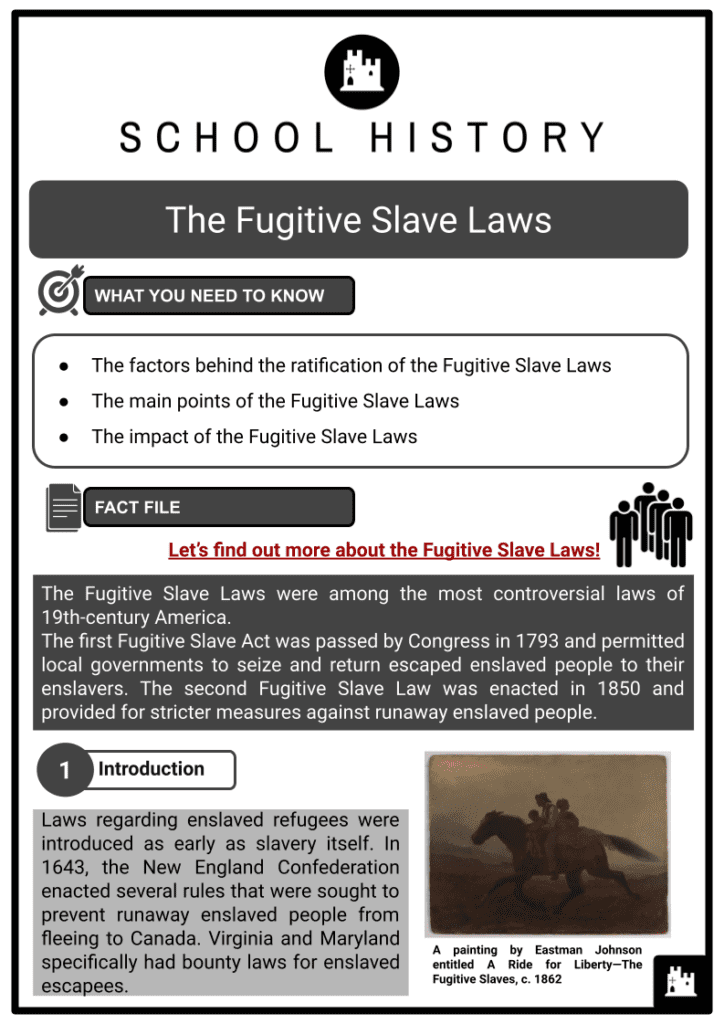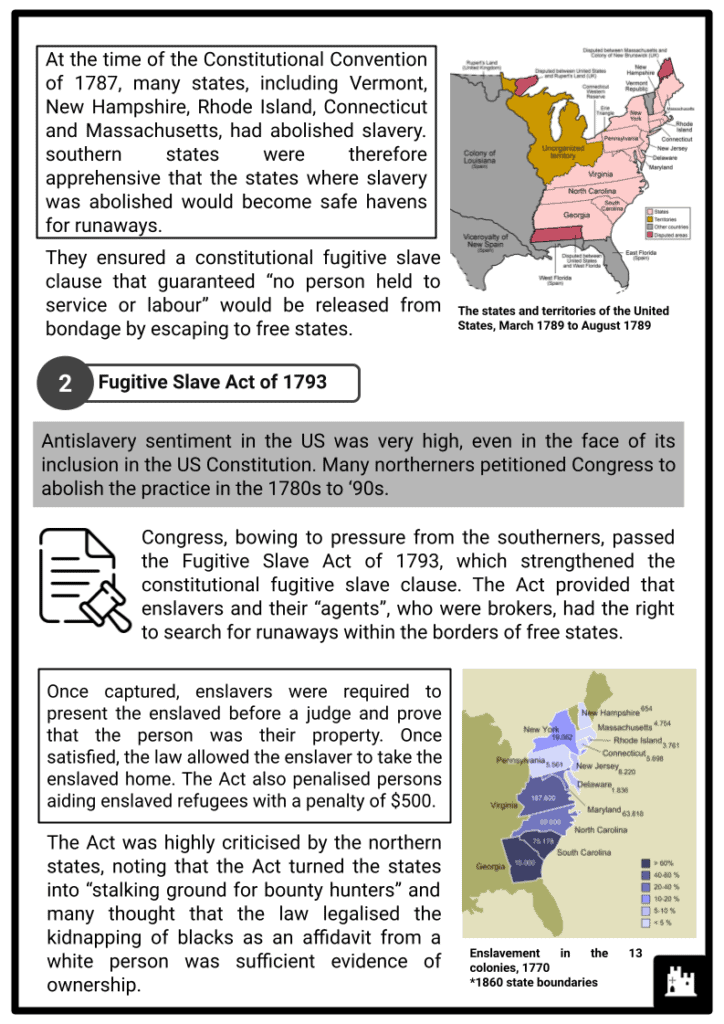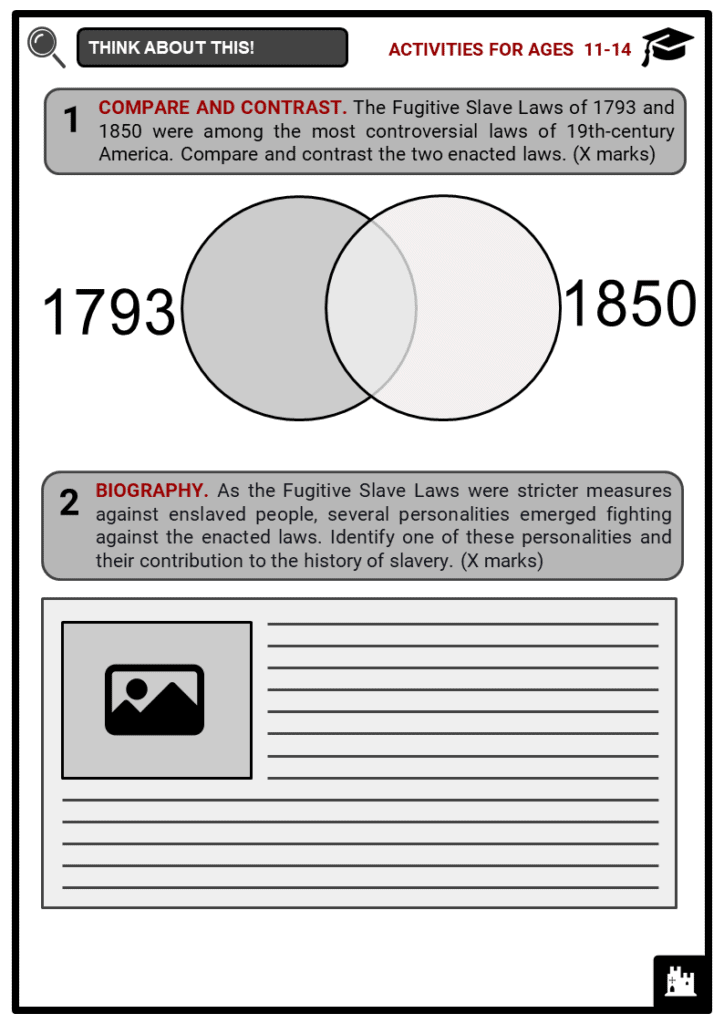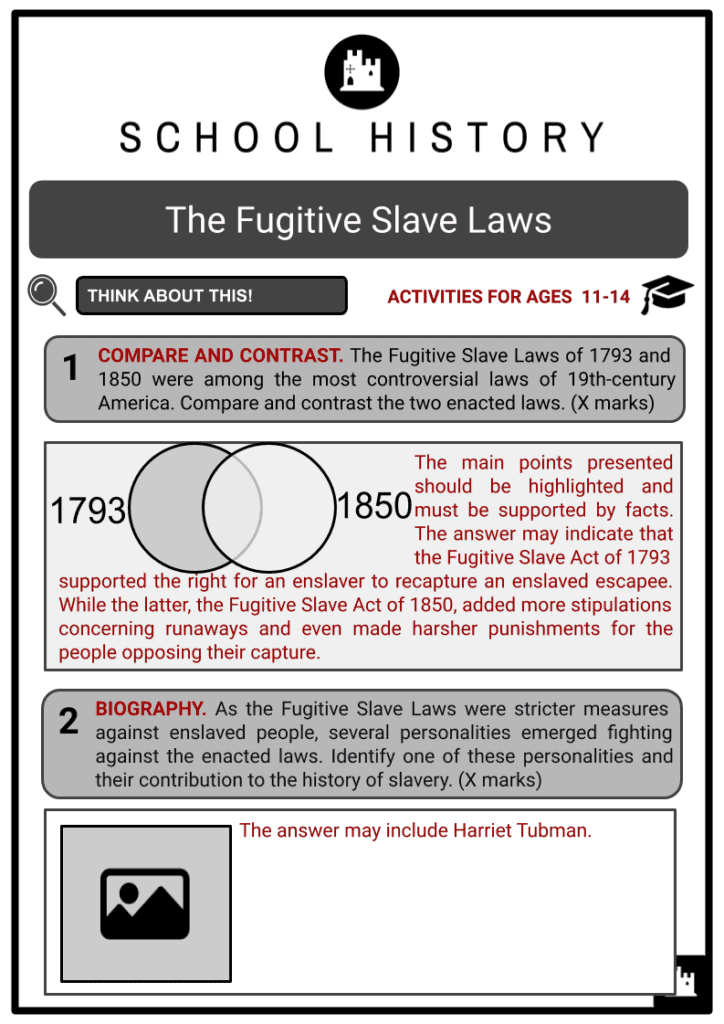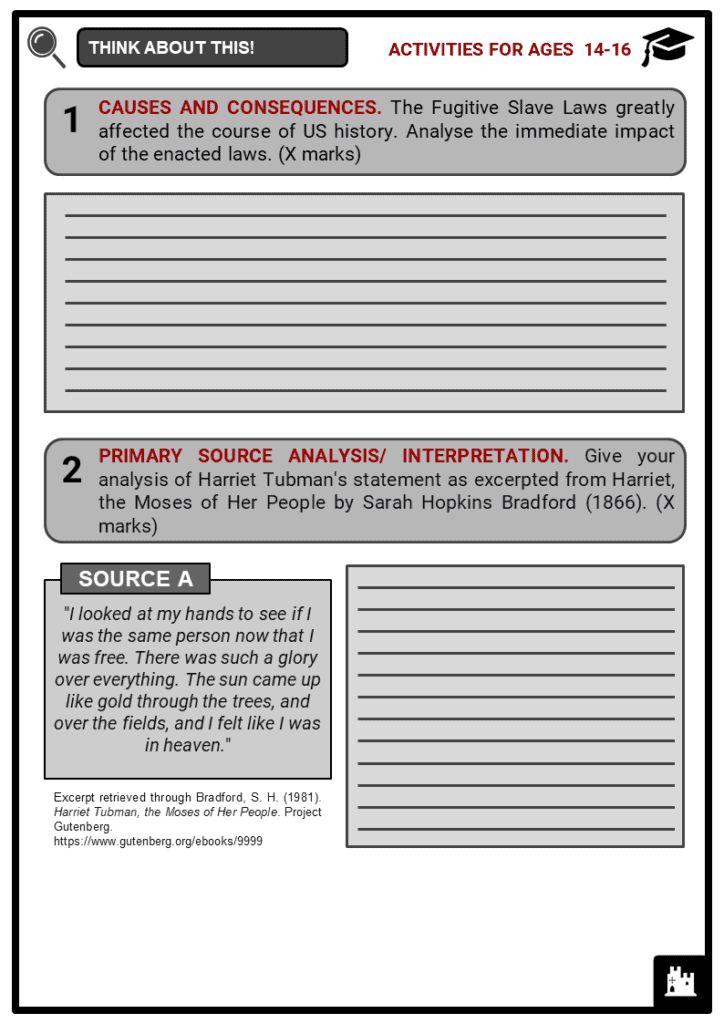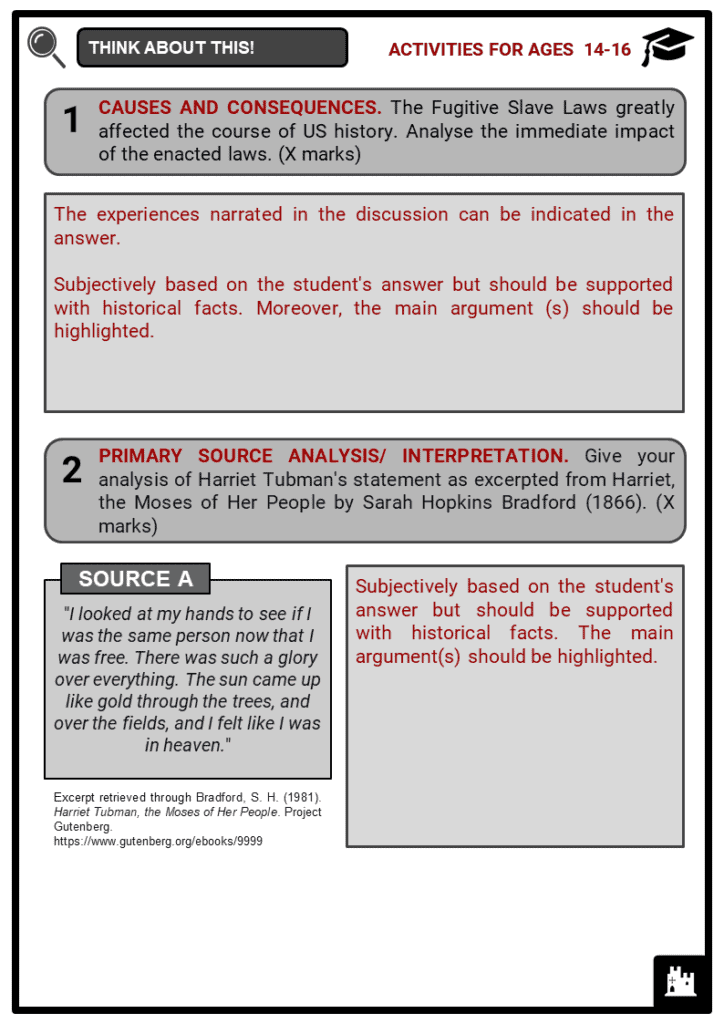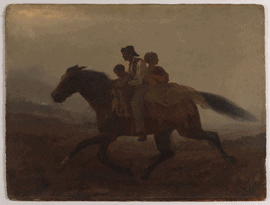Download The Fugitive Slave Laws Worksheets
Do you want to save dozens of hours in time? Get your evenings and weekends back? Be able to teach The Fugitive Slave Laws to your students?
Our worksheet bundle includes a fact file and printable worksheets and student activities. Perfect for both the classroom and homeschooling!
Table of Contents
Add a header to begin generating the table of contents
Summary
- The factors behind the ratification of the Fugitive Slave Laws
- The main points of the Fugitive Slave Laws
- The impact of the Fugitive Slave Laws
Key Facts And Information
Let’s find out more about the Fugitive Slave Laws!
- The Fugitive Slave Laws were among the most controversial laws in 19th-century America.
- The first Fugitive Slave Act was passed by Congress in 1793 and permitted local governments to seize and return escaped enslaved people to their enslavers. The second Fugitive Slave Law was enacted in 1850 and provided for stricter measures against runaway enslaved people.
Introduction
- Laws regarding enslaved refugees were introduced as early as slavery itself. In 1643, the New England Confederation enacted several rules that sought to prevent runaway enslaved people from fleeing to Canada. Virginia and Maryland specifically had bounty laws for enslaved escapees.
- At the time of the Constitutional Convention of 1787, many states, including Vermont, New Hampshire, Rhode Island, Connecticut and Massachusetts, had abolished slavery. Southern states were therefore apprehensive that the states where slavery was abolished would become safe havens for runaways.
- They ensured a constitutional fugitive slave clause that guaranteed “no person held to service or labour” would be released from bondage by escaping to free states.
Fugitive Slave Act of 1793
- Antislavery sentiment in the US was very high, even in the face of its inclusion in the US Constitution. Many northerners petitioned Congress to abolish the practice in the 1780s to ‘90s.
- Congress, bowing to pressure from the southerners, passed the Fugitive Slave Act of 1793, which strengthened the constitutional fugitive slave clause. The Act provided that enslavers and their “agents”, who were brokers, had the right to search for runaways within the borders of free states.
- Once captured, enslavers were required to present enslaved people before a judge and prove that the person was their property. Once satisfied, the law allowed the enslaver to take the enslaved home. The Act also penalised persons aiding enslaved refugees with a penalty of $500.
- The Act was highly criticised by the northern states, noting that the Act turned the states into “stalking ground for bounty hunters” and many thought that the law legalised the kidnapping of blacks as an affidavit from a white person was sufficient evidence of ownership.
- There were instances in which slave catchers caught formerly enslaved people and brought them to the South. This prompted the northern states to pass the Personal Liberty Laws that provided for the right to a trial by jury for accused formerly enslaved people.
- In 1842, the Personal Liberty Laws were challenged in the US Supreme Court in the case of Prigg vs. Pennsylvania. Edward Prigg was convicted of kidnapping after capturing a suspected enslaved in Pennsylvania. The Supreme Court ruled in favour of Prigg, thus setting the precedent that the federal Fugitive Slave Law superseded state measures countering the Act.
- However, through the Underground Railroad, about 100,000 enslaved people escaped from the South to the northern free states, with many managing to evade capture and re-enslavement. The South, therefore, sought measures to strengthen the law to curtail enslaved people from running away and provided mechanisms for the arrest and re-enslavement if they did manage to escape.
- Harriet Tubman was among the celebrated heroes of the Underground Railroad network. She was born into slavery in Maryland in 1822, lived under very harsh conditions as an enslaved, but found consolation in Christianity and escaped in the late 1840s. She returned to the South to help her family, friends and other enslaved people escape through the Underground Railroad.
Fugitive Slave Act of 1850
- There was intense lobbying for a stricter Fugitive Slave Act, and in 1850 Congress revised the Act as part of the Compromise of 1850.
- The new Act compelled white citizens to capture and return runaway enslaved people, and further denied the enslaved the right to trial by jury.
- The law caused the abolitionists’ movement to increase the fervour of their campaigns, while the number of enslaved escaping through the Underground Railroad network was the highest during this period.
- Soon after, revolts and rescue actions took place. States such as Vermont, Wisconsin, Pennsylvania and New York created large units to help enslaved people escape.
- There were instances wherein southern politicians exaggerated the number of people fleeing enslavement. Often, they blamed it on northerners intervening with southern property rights.
- Hence, Congress imposed sterner laws regarding fugitives in the US. It increased the penalty for interfering with powers of enslavers to $1,000 and six months imprisonment.
End of the Act
- In August 1861, Congress imposed the Confiscation stating that enslavers were impeded to re-enslave captured runaways. It also established military emancipation. However, the law applied only to enslaved people used by rebel enslavers supporting the Confederates.
- Due to doubled efforts of lawmakers and antislavery advocates from the northern free states, both of the Fugitive Slave Acts were finally repealed and nullified by the Congress on 28 June 1864.
Image sources:

